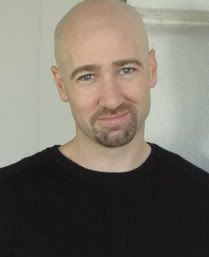China Stories Pt. 27: May 4, 1989
Note: I have a bunch of pictures and other stuff, but I do not have a scanner. As soon as I get one (or get access to one), I will put them up.
Over the course of April and May, I spent several days and nights out with a camera crew covering the demonstrations.
The days blended into each other, and I have lost track of when I saw the various things I saw going on in the square. I will try to recount a few of the more memorable moments.
Mostly, I was out with the Beijing-based crew. The soundman was American. Bradley was the guy who had previously studied in our program, and come out to recruit us. The cameraman, John, was American-born Chinese. He'd been based in Beijing for 10 years or more, and wasn't going anywhere. He liked living in Beijing, he had a wife and kids there, and I think his father had retired there as well.
May 4 promised to be a big day in terms of demonstrations. The May 4th Movement was a patriotic movement that originated in response to what were perceived as the very unfair (to China) terms of the Treaty of Versailles. In the treaty, China's sovereign interests were ignored, as German-occupied territory in China was turned over to Japan, rather than returned to Chinese sovereignty. (One area occupied by Germany was Shandong, including the port city of Qingdao, famous for its nearby mineral springs. The Germans used it to make pretty decent beer – Tsing-tao.)
This sparked demonstrations for greater Chinese nationalism and for modernization, and against China's feudal society based on Confucianism, which was seen as weak. Intellectuals and students were at the forefront of this movement, and led demonstrations. On May 4th, 1919, thousands of university students went to Tiananmen (Gate – there was no square at that point) to protest the "unequal treaty." Some of the leaders of the May 4th Movement later became the founding figures of the Chinese Communist Party- such as Li Dazhao, who helped found the CCP, and who had hired a young assistant librarian at Beijing University named Mao Zedong.
We started the day early at Bei Da. It was the first time I'd been back on campus in 10 days or so. Before we got started, I bought a commemorative stamped envelope at the Bei Da post office. I don't know why – I was there, it was there. I still have it.
Brad, John and I positioned ourselves for the beginning of the march on the roof of the apartment building directly opposite the main gate of the university.
Once the march began, a large group numbering at least 10,000 flooded from the gate, jubilant, triumphant. They set off for Tiananmen Square.
We followed the group all day. As it made its way to the square, it swelled to number in the tens of thousands, maybe over 100,000. (Significantly, the protests had begun to attract people from all walks of life, not just students. This was the cause of grave concern to the leadership.) We would drive ahead of the crowd and find a position – say, on an overpass. I would carry the tripod, help set up, and then keep the crowd from jostling the crew (as best I could). We would follow the protesters for awhile, and then get back in the car and leap ahead again.
The march grew tense at one point, when the police had set up a cordon to try to prevent the marchers from getting to the square. The police were not prepared for the sheer size of the crowd, nor were they prepared to use violence against the crowd. In any case, the crowd was quite peaceful, even jovial. When they came to the police, who stood with arms linked, they simply pressed their way through.
At one point, we drove out to Beijing Normal University, where we heard that one of the student leaders was speaking. We got some footage of one of the young leaders, a young man named Wu'er Kaixi. He later joined other student leaders in holding a televised meeting with senior leaders in the Great Hall of the people. Wearing hospital garb and with an IV in his arm (he'd fainted earlier, I think, and had been taken to the hospital), he spoke defiantly and directly to the assembled senior leadership of China. His lack of deference to these elders was shocking, but he was articulate, forceful, and above all, charismatic. It was riveting. (Imagine Bush and Cheney consenting to sit down with student leaders from UC Berkeley or Harvard, on live TV, and having the student leaders tear the POTUS and VPOTUS a new one.)
(Hang on a sec, I'm still savoring that image. Heh.)
I saw another leader that day – the main leader of the group from Bei Da, Wang Dan. He was a young history student, 20 or 21 years old. He was smart, articulate, and quiet. He probably had been one of the people who spoke before the first march to the square, but I'm not sure. I took a picture of him on May 4, because I thought, "here is a person who is playing a major role in this event. One day he'll be a political leader. Or a martyr."
Eventually we made it down to the square itself, which was teeming with well over 100,000 people by now. We walked all around the square, shooting footage of whatever was happening.
I thought back to the demonstrations I had seen on tv, while I studying Chinese back in Vermont two years before.
I asked John, "how do these demonstrations compare to the ones in 1987?"
John looked at me in disbelief. "There's no comparison. These are about a hundred times larger."



1 Comments:
As always, I can't wait to read more!
Post a Comment
<< Home